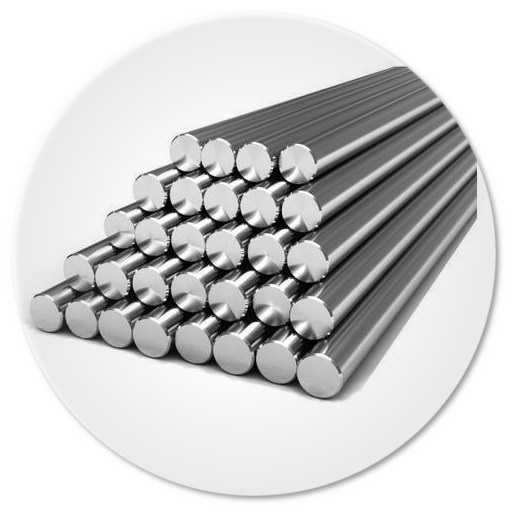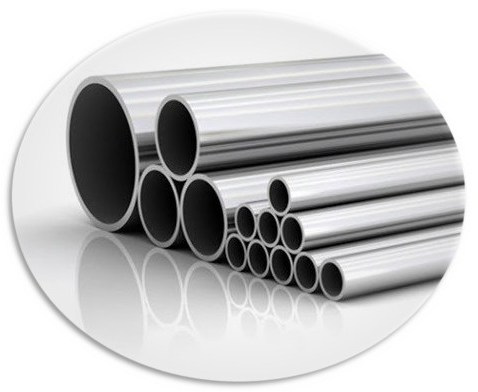Importer and supplier of chemicals
|
Steel Pipe and shaft
Trading and sale
|
Steel shafts |
Steel pipes |
Article
Pipe is used to transfer fluids in the piping system and is one of the most important equipments used in this industry.
- How to choose a piping pipe:
- National and regional requirements, laws and standards
- Type of operating fluid
- Operating fluid temperature and pressure
- Type of installation location environment
- Purchase and implementation costs
- The pipes are available in different sizes from 1.2 inches to 80 inches in diameter. Diameters of 1.8 to 1.2 are commonly used to service precision tool lines. 3.4 to 2 inch diameters are also used in converters. The size of 1.2 inches is one of the most used sizes.
- Tubes are usually produced in lengths of 6 or 12 meters. The weight of pipes and fittings are also presented in tables according to the diameter of the pipe or the specifications of the fittings.
Pipe size is expressed in NPS (Nominal Pipe Size) or nominal size. The more common ASME standard classifies and describes plumbing in a variety of applications:
- B31.1: Piping Power
- B31.2: Piping Fuel Gas
- B31.3: Piping Chemical Plant and Petroleum Refinery
- B31.5: Piping Refrigeration
- B31.9: Piping Building Service
Steel pipes:
The table can be used to select the type of pipe for different systems, but PIPNG HANDBOOK has suggested seamless pipes for temperatures above 200 ° C and pressures above 150 psig. Steel pipes are made in two types of welded and seamless and are offered in two types of black steel and galvanized (inside, outside or both galvanized).
>Steel pipes in DIN standard:
DIN2440 and DIN2441 steel pipes are welded and seamless with black galvanized external surfaces or made of ST33-2 steel according to DIN17100 standard. The nominal pressure is 25 times and the test pressure in the factory with water is 50 times. This type of pipe is a simple double head and two gear heads with a bushing and is suitable for gear connection.
.ANSI standard steel pipes:
The wall thickness of the pipe is expressed in schedules and its range varies from 5 schedules, which is the lightest, to 160 scoops. The thickness of the pipe wall varies with the size of the pipe, the higher the order, the thicker the pipe wall for a certain diameter. These types of pipes, depending on their type, can be supplied in two gears, flanges or two simple ends for welding.
Two types of systems are commonly used to describe the wall thickness of pipes:
The first system that has been used in business for many years:
- STD = Standard
- XS = Extra strong (extra heavy)
- XXS = Double extra strong (Double extra heavy)
The second system is based on the category of pipes, and each category has different wall thicknesses for a given size.
Some popular categories are as follows:
- Sch 40 = Schedule 40
- Sch 80 = Schedule 80
- Sch 160 = Schedule 160
Steel pipes in BS standard:
Seamless pipes: suitable for connecting gears or welding connections up to a nominal diameter of 150 mm are offered as two simple heads, or as two ribs with bushings and in three weights: light, medium and heavy. These pipes can be used up to the allowable working temperature and pressure 21 times, provided that their wall thickness is not less than what is given in the average weight table and the type of connection is welded pipe. If the connection is gear type up to the maximum working temperature, the allowable working pressure will be reduced to 9 bar. The test pressure of these pipes is 50 bar in the factory. These pipes can be bent.
Seamless and seamless steel pipes are offered in five groups in terms of chemical composition and type of construction:
- General purpose carbon steel under pressure
- Carbon steel and manganese carbon for high temperature pressure applications
- Carbon steel and other alloys for low temperature pressure applications
- Carbon steel with other alloys for high pressure applications
- Stainless steel pipes (STAINLESS STEEL)
Steel pipes in ISO standard:
For the applications of this part in the ISO standard, steel pipes are supplied according to the criteria in ISO 65 and 4200 ISO standards. Available:
Heavy and seamless steel pipes
Medium weight steel pipes, welded and seamed
The use of galvanized pipes in these systems is not allowed, the most important reason is the loss of galvanized coating (zinc) at hardnesses less than 50 ppm.
Copper pipes:
Copper pipes, used in heating and cooling installations, must meet one of the following standards:
- DIN 1786
- BS 2871 PART 1
- ANSI / ASTM B88
- ISO 274
Polymer pipes:
Polymer pipes should be used in heating installations with heating water with a maximum temperature of 90 ° C and a diameter of 32 mm with a thickness of 3 mm.
Types of polymer pipes:
Plastic pipes that are divided into heating installations with heating water, with a maximum temperature of 2 ° C, according to the following categories.
- PVC pipes
- PE pipes
- PB pipes
- PP pipes
- PEX pipes
Design basics:
Speed: The maximum water velocity in the piping systems of heating water (boiler), cooling water (chiller), cooling water (cooling tower) is stated in occupied areas of 8 feet per second and in non-occupied areas is 10 feet per second. Seconds can be reached, but the proper speed is 2 to 6 feet per second.
For diameters of 50 mm and less, a speed of 4 ft / s should be considered, and for diameters greater than 50 mm with a pressure drop of 4%. The maximum safe speed in thermoplastic pipes is 1.5 ft / s, in which case the total pressure due to the ram impact should not exceed 150% of the operating pressure of the system.
Carbon Steel Pipes:
These pipes are used in industrial piping systems up to a temperature of 400 ° C. Applications and variety of materials of these pipes are:
- A106-C: For medium temperature and medium or high pressure systems such as water pump pump line
- A106-B: For medium temperature and medium or high pressure systems
- A672: For systems with medium temperature and medium or high pressure and a nominal diameter of 650 and above
- A53-B: For low temperature and low pressure systems
- A134: For low temperature and high size systems, such as main water cooling lines
- API 5L: For piping liquefied fuel and natural gas lines
- Alloy steel pipes:
- These pipes are used in industrial piping systems for systems with a temperature higher than 400 ° C.
- Applications and variety of materials of these pipes are:
- A335-P11: For the temperature range of 400 ° C to 470 ° C
- A335-P22: For temperature range 480 ° C to 550 ° C (main steam headers)
- A335-P91: For temperatures above 500 ° C
- A335-P92: For temperature range above 560 ° C
Stainless steel pipes:
These pipes are used in industrial piping systems for systems containing corrosive substances. Applications and variety of materials of these pipes are:
- A312-TP304: For hardened water lines and compressed air Instruments and service
- A312-TP316: For sampling lines
- A312-TP317: For lines containing seawater with a nominal diameter of 150 and smaller
Standard dimensions and thickness of the pipe:
ANSI B36.10: For welded or seamless steel pipes
ANSI B36.19: For stainless steel pipes Pipe connection methods:
The main methods used to connect pipes can be divided into three main categories, two methods are welded and the other method is screw. These three methods are:
- BUTT WELDED
- SOCKET WELDED
- SCREWED
In this method, which is also called welding method, two pipes are placed in the same direction and welded at a suitable distance from each other and then connected by continuous welding. However, before connecting, the two ends of the pipe are chamfered, which is called Edge Preparation.
As mentioned, when welding pipes and fittings, first two pipes are placed next to each other, then by temporary welding, the two pipes are fixed in coaxial position, which is called FITUP operation. After the main welding, the temporary welds are removed from the pipe. The following figure shows an example of FITUP.
Welding methods and the number of welding layers, which is called welding. Depending on the type of metal and its working conditions, it is described in special documents.
SOCKET WELD connection:
In this type of connection, one of the pipes is placed inside the other connections and all around it is filled with welding metal. In this type of connection, the ends of the pipes are made smooth.
To inquire about prices, please call 09121940732 (Arab Engineer) or leave a message on WhatsApp. You can also send your request to arab.sepahan@gmail.com.
Thanks

 |
Sales Phone : | +9821-44155904 | Sales and projects : | +989195855273 | |||
 |
sales email : | sales@ktkar.com |  |
IVR:
|
+9831-42695831 |


